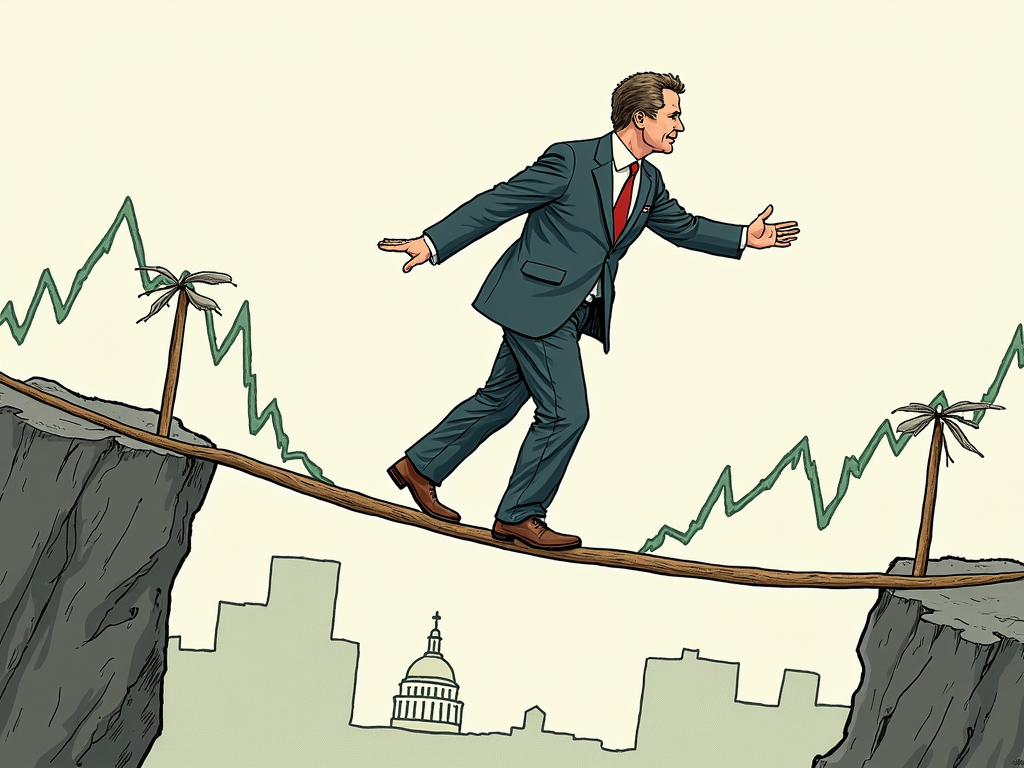Economic cycles resemble the tides of the ocean, constantly flowing in and out, affecting everything in their path. For investors and individuals, understanding these cycles is crucial for navigating the financial seas. This article delves into the phases of economic cycles—recovery, boom, slowdown, and recession—offering strategic insights on counter-cyclical measures and investment strategies. Each chapter provides a compass to help investors make informed decisions, regardless of the economic climate.
Counter-Cyclical Measures: Ensuring Stability in Economic Evolution

Counter-cyclical measures play an essential role in stabilizing the economy at different phases of economic cycles. Through targeted interventions in economic dynamics, the state can mitigate excessive developments and alleviate crisis situations. These measures are particularly important during extreme fluctuations to ensure stability at both national and international levels.
During recovery phases, the economy is in a recovering state, where production and employment begin to slowly pick up. During these times, broad state interventions are often unnecessary, as economic forces are already oriented upwards. However, targeted fiscal support through moderate spending programs can provide additional momentum and promote sustainable growth without fueling inflation.
The boom phase, characterized by high demand and near-full employment, requires much more conscious management from the state. Here, according to Keynesian principles, it is advisable to reduce state spending and increase taxes. The purpose of these counter-cyclical measures is to prevent an overheating of the economy and diminish potential inflationary threats. This approach helps conserve financial resources for future economic slowdowns.
As soon as the economy enters a slowdown phase, the state starts to inject more counter-cyclical impulses. By increasing public spending or investing in infrastructure projects, the aim is to compensate for declining demand and falling investments in the private sector. This bolsters confidence among consumers and businesses and can cushion further slowdowns.
In the recession phase, intensive state interventions become inevitable. Broad economic stimulus packages and prudent tax cuts can reinvigorate declining demand and bring workers out of unemployment. Public investments can create jobs in the short term and lay the groundwork for long-term growth. Even though such measures are criticized by monetarists, who express concerns over uncontrolled public deficits, they have repeatedly proven to be an effective tool for guiding economic systems out of deep crises.
In summary, counter-cyclical measures are fundamental to reducing volatility in economic cycles and promoting sustainable growth. However, they require a balance between fiscal and monetary policies and proactive planning to effectively address current and future economic challenges.
Investment Strategies: Mastering the Economic Cycle

Regardless of the economic situation, well-considered investment strategies are key to success. However, the pace of economic cycles requires investors to adapt their tactics to manage risks and seize opportunities. In the recovery phase, when the economy shows signs of rebound, there is immense potential in growth stocks. Companies in emerging sectors such as technology and renewable energy benefit from rising demand and investments in innovation. Infrastructure projects, often incentivized by the state, also offer promising return opportunities.
The boom is the time of economic vitality and high demand. However, the risk of overheating exists. Here, portfolio diversification remains crucial. A balanced mix, which also includes defensive investments in stable sectors like healthcare, can help mitigate the risk of a sudden slowdown. Infrastructure companies remain attractive even in this phase, as they often have stable cash flows and the ability to meet strong demand.
With the onset of the slowdown, investors should assess their risk propensity and portfolios. Risk reduction is the imperative direction, focusing on less volatile investments. Debt reduction in corporate balance sheets becomes a survival strategy. Investors might benefit from investing in companies that undertake effective cost-cutting measures to withstand economic challenges more efficiently.
During the challenging recession, counter-cyclical investments should be at the forefront. This includes stocks of companies that remain relatively unscathed during economic slowdowns, as well as government bonds, which offer stability and safety. A long-term perspective is useful, as market volatility can be offset over time. The ability to respond to state stimuli and expansive fiscal policies, which often open up new investment opportunities, is of particular importance.
In summary, investors should dynamically adapt their strategies to the stage of the economic cycle, with diversification playing a constant role. This adaptability allows for the best possible exploitation of opportunities and effective risk management.